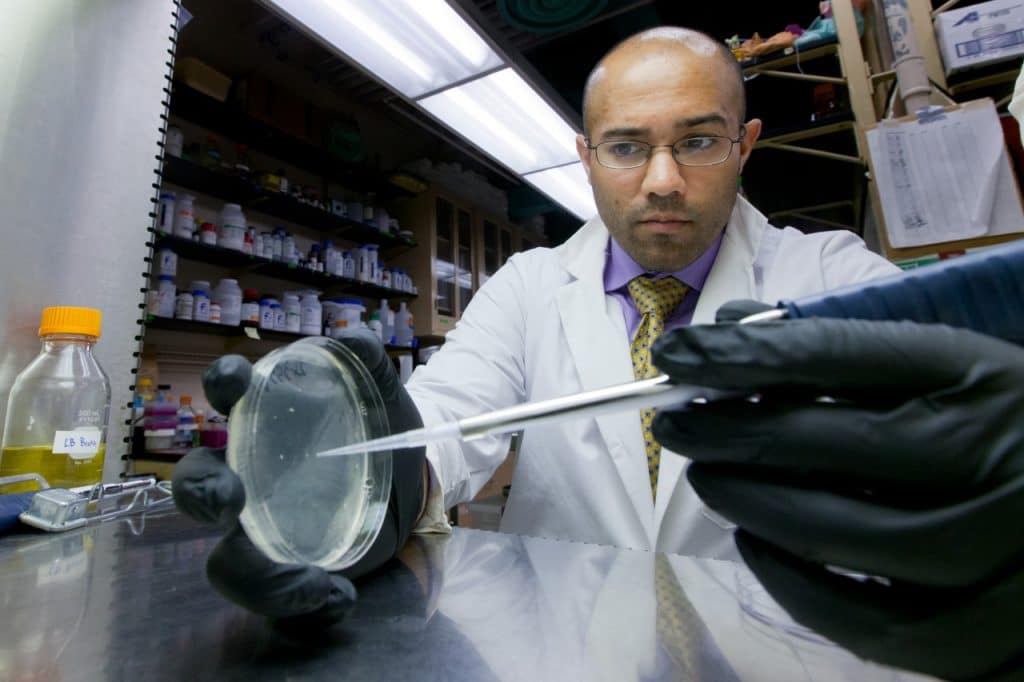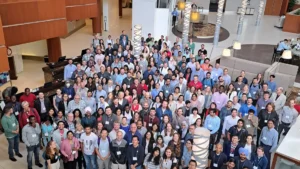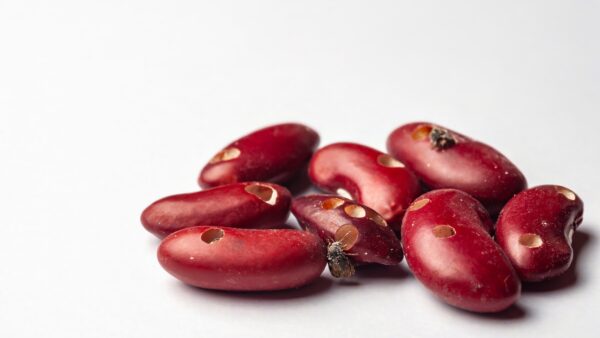The National Association of Plant Breeders holds its biggest-ever meeting as its growing membership works to tackle the challenges posed by regulatory and climate changes.
Getting bigger is a challenge that many organizations wish they were faced with.
Peggy Ozias-Akins and the organizers of this year’s meeting of the National Association of Plant Breeders (NAPB) in Pine Mountain, Georgia, found out first-hand what it’s like to facilitate the gathering of a rapidly-growing group of professionals working to make a difference.
“We were scrambling a bit when we found out just how many registrations were coming in,” says Ozias-Akins, plant breeder at the University of Georgia (UGA) and chair of the organizing committee. “It’s a great problem to have, and it’s so gratifying to see this group grow as word gets out about the NAPB.”
With over 400 people attending the ninth annual meeting of the NAPB from Aug. 25-29, 2019, it was a record turnout. With 451 members, the NAPB is also enjoying its highest membership to-date. As many groups in an array of industries work to simply maintain their numbers, the NAPB is enjoying continual growth since it was founded by the Plant Breeding Coordinating Committee (PBCC), which works to advance the interests of public sector plant breeders in the United States and beyond.
By contrast, the NAPB strengthens both public and private sector plant breeding to promote food security, quality of life and a sustainable future. It represents both American and Canadian breeders, and while its growth shows that plant breeding is as important as ever — perhaps more so — it also shows that there’s a lot of interest in helping reverse what some see as a decline in public sector plant breeding.
According to new PBCC chair Michael Kantar, an assistant professor at the University of Hawaii, the NAPB’s growth comes as the PBCC is developing its new strategic objectives in light of changes within public sector plant breeding — like the recent announcement that the National Institute of Food and Agriculture (NIFA) is being moved out of Washington, D.C. to Kansas City.
Many NIFA staffers — about two-thirds — have chosen to quit rather than relocate, causing concern that NIFA offices will be staffed by skeleton crews that lack the resources needed to do their work.
“As a discipline — in terms of sheer numbers — public sector plant breeding isn’t healthy. We need to look to the future and figure out how we can keep public sector breeding healthy and move it forward,” says Kantar. The PBCC, struck in 2006, held its annual general meeting as part of the event in Pine Mountain.
“Every five years we have to decide what our new objectives are, how we promote plant breeding, how to ensure we continue with this discipline that’s fundamental to human survival. We’re in the process of drafting our new objectives and finding people who want to take these on.”
One proposed objective is to foster communication among public breeders and federal agencies on public policy issues, including alerts to existing and emerging threats to agricultural security that affect plant breeding.
“There are some things we will always do — like trying to identify what capacity we have for plant breeding; keeping track of all the public sector breeders across the country; we will always care about germplasm; we will advocate for plant breeding. But we want to ensure everyone knows and cares about it. We have a lot of room to do new things beyond what we’ve traditionally done.”

Boosting Private Sector Involvement
In the spirit of trying new things, the NAPB has established a new Industry Committee, which it hopes will synergize more industry participation.
“We want to try and bolster interaction between public and private sector scientists. There are some sectors of the industry that have been very active in the NAPB over the years and others less so. The more people we can involve, the better,” says Ozias-Akins.
Led by past-president Klaus Koehler, the committee will expand the exposure of commercial plant breeding activities to NAPB membership through the creation of opportunities for mentorship, training, sabbaticals and other collaborations.
Part of the NAPB’s mission regarding mentorship includes the Borlaug Scholars program, which enables attendance of future leaders at the NAPB annual meeting by providing funding to both undergraduate and graduate students. The scholars — of which there were 12 this year, up from eight the year prior — are paired with mentors who work with them to help the students figure out their career path.
Several of this year’s Borlaug Scholars have had experience working for private sector companies during the summer months and beyond, which only strengthens the NAPB’s involvement with the private sector, adds Ozias-Akins.
“To feed a growing population in the face of climate change, combining advocacy with communication and education helps us get that message out.”
Facing Climate Change
A big theme of this year’s meeting in Georgia was adapting to future concerns such as climate change, which presents a variety of challenges for breeders. Delivering the keynote address this year was Jeffrey Bennetzen, a geneticist at UGA. His talk addressed the need for plant breeders to introduce new sources of genetic variation in order to breed the crops of the future.
He asked audience members to raise their hands if they thought they’d be growing the same crops in the same places two decades from now. Only a few hands went up.
“Plant breeding has accomplished some amazing things over the past 75 years, but it’s occurred at a cost,” Bennetzen said.
He went on to show how, according to the United Nations, the number of undernourished people worldwide has gone up every year since 2015. Almost one billion people are now considered malnourished around the globe.
At the same time, the rest of the world consumes far less protein per capita than Europeans and North Americans. Inputs like water, fertilizers and high-quality land are becoming less available and/or more expensive, he noted.
Add to this the effects of climate change, and plant breeders everywhere have their work cut out for them in an effort to bring genetic diversity back to crop species.
According to Bennetzen, plant breeders have three powerfully updated tools at their disposal — genome editing (which can create targeted diversity); wide crosses (which can harness traits from distantly-related species); and microbiomes (which can provide a source of genetic variation that benefits crop performance).
“It’s only been over the last 10,000 years or so that we may have been in a period of low climate variability, which may have made agriculture as we know it possible. The agriculture of the future will be very different, and we need to think over the even longer term than what we’ve been used to.”
Meeting attendees were treated to tours of two University of Georgia campuses — Griffin and Tifton. UGA plant breeding programs have developed over 400 commercialized plant cultivars since 1990. Of those, 40% are agronomic crop cultivars, 30% are cultivars of horticultural food crops, 27% are ornamental plant cultivars, and 4% are turfgrass cultivars — the latter having widespread usage on golf courses and athletic fields throughout the southern United States and in several countries, notably on athletic fields hosting World Cup, Olympic, and Super Bowl events.
As explained by UGA turfgrass breeder Paul Raymer, public concerns over climate change are creeping into the turfgrass realm, with demand for drought-tolerant varieties on the rise. 
“Turfgrass breeding is different than just about all other breeding programs. We work with about a dozen different species and the applications are very broad. Traits needed for different applications vary widely, meaning our breeding programs tend to fragment a lot,” Raymer said.
“Every market area has different demands. Right now, homeowners want something they don’t have to water a lot and mow as often. All these requirements add up and what we wind up with are a lot of small breeding programs that look a lot different from most others. As turfgrass breeders, we’re decades behind other crops in terms of genetics and genomics. We’re making progress in applying those tools — they’re a lot more affordable and you’re going to see them more widely adopted in the future.”












